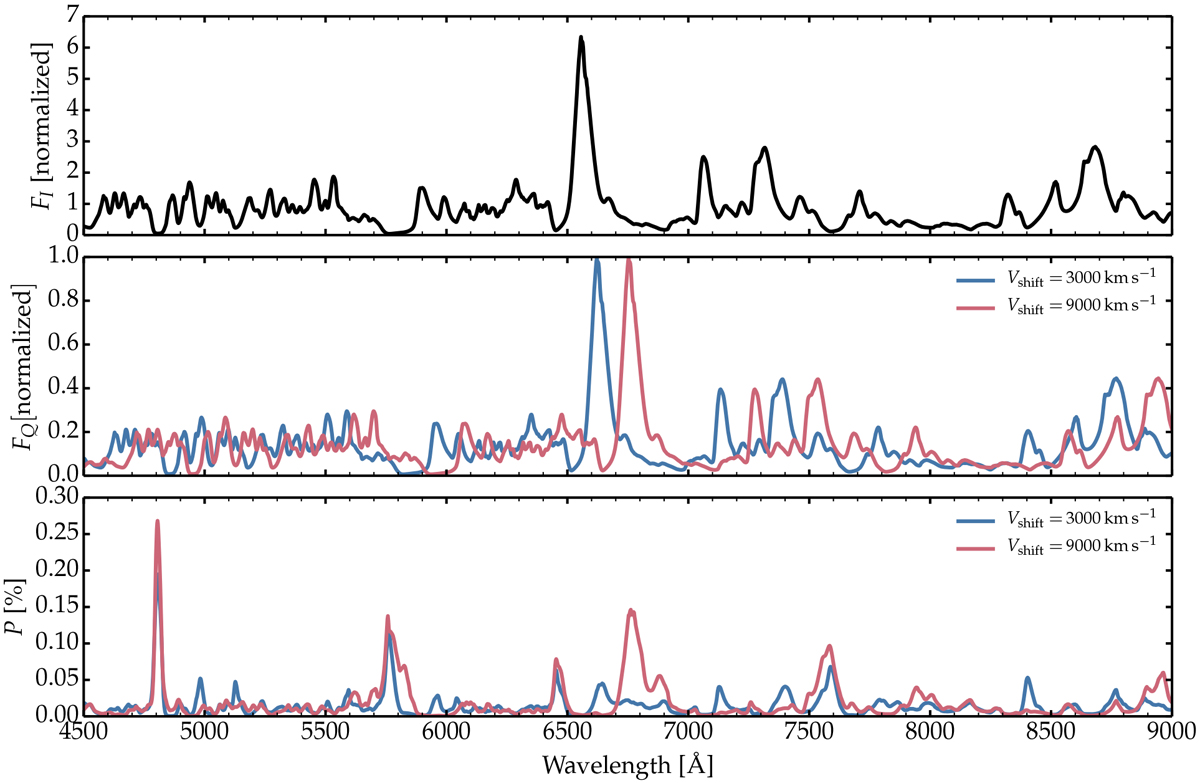Fig. A.1

Same as Fig. 8, but now showing the results for the idealized case of a high-velocity scatterer and a point source discussed in Appendix A.2. The polarized spectrum is identical to the flux spectrum except that it is redshifted. If we increase the velocity of the scatterer from 3000 (blue) to 9000 km s−1 (red), FQ remains the same except for the increased redshift. The similarity between the intrinsic and scattered spectra is easily seen in the middle panel. However, the polarization P (bottom panel) is much more complicated because of the velocity shifts. Line photons can be scattered into wavelengths where there is little flux, and hence produce a strong enhancement in the polarization, and even spikes in polarization, at those wavelengths. Retrieving information on the scatterer by analyzing P is more difficult than by inspecting FQ.
Current usage metrics show cumulative count of Article Views (full-text article views including HTML views, PDF and ePub downloads, according to the available data) and Abstracts Views on Vision4Press platform.
Data correspond to usage on the plateform after 2015. The current usage metrics is available 48-96 hours after online publication and is updated daily on week days.
Initial download of the metrics may take a while.


